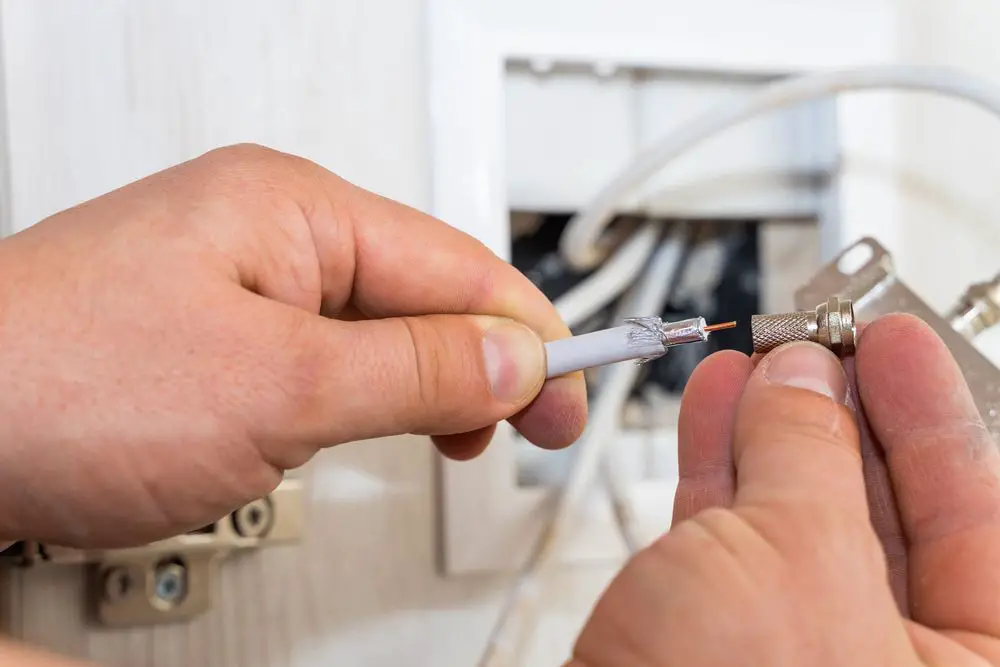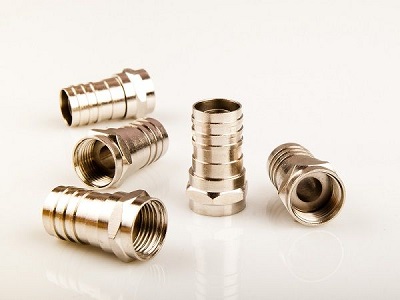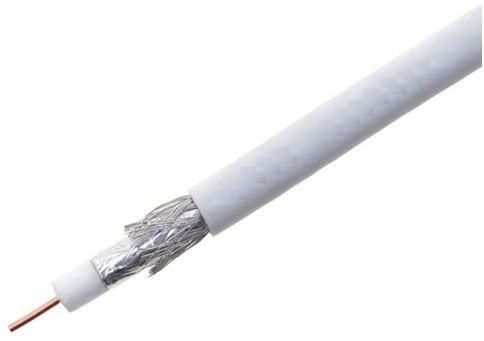
*As an Amazon Associate we may earn from qualifying purchases when you buy through links on our site.
Installing a flat coaxial cable or any other type of coax cable might seem like a straightforward task, and it is – for the most part anyway.
Nonetheless, overlooking some seemingly minuscule issues at the point of installation might have far-reaching repercussions further down the line.
Some of these issues may go unnoticed at first. But, as the cable’s performance continues to decline, it will eventually become unusable. At that point, you’ll have to replace it entirely.
This guide explores the top 9 tips for coaxial cable wiring if you want to extend its lifespan by as much as possible.
- 1. Avoid Crushing the Cable
- 2. Bury the Coax Cable Correctly
- 3. Choose the Right Cable
- 4. Use a Flat Coaxial Cable for Tight Bends
- 5. Ensure That It Is Adequately Weatherproofed
- 6. Keep the Cable Sheath Intact
- 7. Terminate the Ends of the Cable Correctly
- 8. Keep Coax Cables Away from Electrical Lines
- 9. Steer Clear of Cable Stingers
- Do It Right, So You Don’t Do It Twice
1. Avoid Crushing the Cable
Be careful not to crush the cable during installation or position it where it’s likely to get crushed by furniture or foot traffic, for instance. Crushing the cable changes its dimensions. As a result, it’s not able to maintain its characteristic impedance.
It also ends up damaging the dielectric that exists between the two concentric conductors. Without adequate insulation, the level of energy loss is likely to increase, which in turn means that the signal transmitted will not be of optimum quality.
2. Bury the Coax Cable Correctly
In certain circumstances, it’s necessary to bury the coaxial cable. It would be a rookie mistake to bury it directly as the outer protective sheath of the cable may not be designed for such conditions.
NOTE: Some cables are rated explicitly for burying underground. If it’s your intention to bury the cable, read the specs and look out for words like “direct burial”.
Ensure that you first enclose it in a conduit that’s specially designed for carrying buried cables (or you can use standard PVC pipe for this purpose).
This enclosure needs to be weatherproofed to prevent the cable running through it from becoming waterlogged – which would beat the purpose of having it in the first place.
The conduit should be designed in such a way that it protects the cable within from getting exposed to the elements, therefore, allowing it to maintain its structural integrity.
3. Choose the Right Cable
Ensure that you choose the right cable for its intended purpose. You also need to consider the parameters of the signals it will transmit relative to the cable impedance. The majority of domestic video antenna feeds use a 75 Ohm round or flat coaxial cable.
You then need to determine what the acceptable level of signal loss is. To minimize it, you can purchase a coax cable with a large diameter (keeping in mind these don’t come cheap!).
So check and compare the performance figures of the different cables and make sure these figures also align with your budget before purchasing and installing them.
4. Use a Flat Coaxial Cable for Tight Bends
All coaxial cables have a bend radius. Bending them beyond their curvature radius damages their internal construction. This inevitably leads to signal energy loss.
If you need a wire that packs compactly into tight spaces, consider using a flat coaxial cable instead, like the Ghost Wire Flat RG6:
Additionally, because they don’t have multiple layers of jacketing, shielding, and fillers like you find in round cables, they’re extremely lightweight and long lasting.
They also provide a higher conductor density, which makes for better overall signal quality.
5. Ensure That It Is Adequately Weatherproofed
Any moisture that enters a coaxial cable plays a major role in the level of energy the signal loses. This is especially the case if moisture is present in the dielectric spacing between the inner and outer conductors.
Moisture also causes oxidation of the outer braid, which in turn reduces the level of conductivity between the individual strands that make it up. The result is – passive intermodulation. This is a kind of distortion that degrades the quality of signal transmission.
To prevent this, ensure that the ends of the cable are sealed properly, especially if it’s to be used externally.
6. Keep the Cable Sheath Intact
It’s important to make sure that the cable sheath isn’t ruptured or nicked during the installation process or otherwise. If it’s broken at any point along its length, it makes it easy for moisture to enter, which in turn leads to oxidation.
This has a direct bearing on the dielectric’s ability to prevent signal energy loss, which in turn leads to distortion.
Check along the entire length of the cable to ensure that the sheath is intact. You can also loop it up and down to make it impossible for water entering the cable to move along its length.
7. Terminate the Ends of the Cable Correctly

Coax cables should be physically terminated using F-connectors. The termination should be done at the receiver and antenna ends of the cable.
This must be done correctly since the ends of the cable provide an easy entry point for moisture. This may, in turn, result in the entire cable becoming waterlogged.
Use high-quality connectors and ensure that the connections between them and the cables have a tight seal to make them waterproof (especially if you’re having to extend the cable).
8. Keep Coax Cables Away from Electrical Lines
The rule of thumb when installing coaxial cables is to ensure that there’s at least a 6-inch distance between them and electrical lines to avoid interference.
If the two cables have to intersect, make sure that you run them perpendicularly to each other to reduce the likelihood of electromagnetic noise distorting the signal.
9. Steer Clear of Cable Stingers

If you strip the coaxial cable and peel back the braid leaving the foil in place, you need to ensure that not a single strand of the braid touches the center conductor.
This would cause a “stinger” effect, which is notorious for messing up the signal quality.
Capping the end of the cable with an F-connector helps ensure the strands stay in place.
Do It Right, So You Don’t Do It Twice
Unless you plan to replace your round or flat coaxial cable every year, you need to install it properly. This involves doing everything possible to reduce its exposure to the elements and other factors that may contribute to its degradation.
That way you can get several good years from it before you’ll need a new one. The tips detailed in this guide should help.

